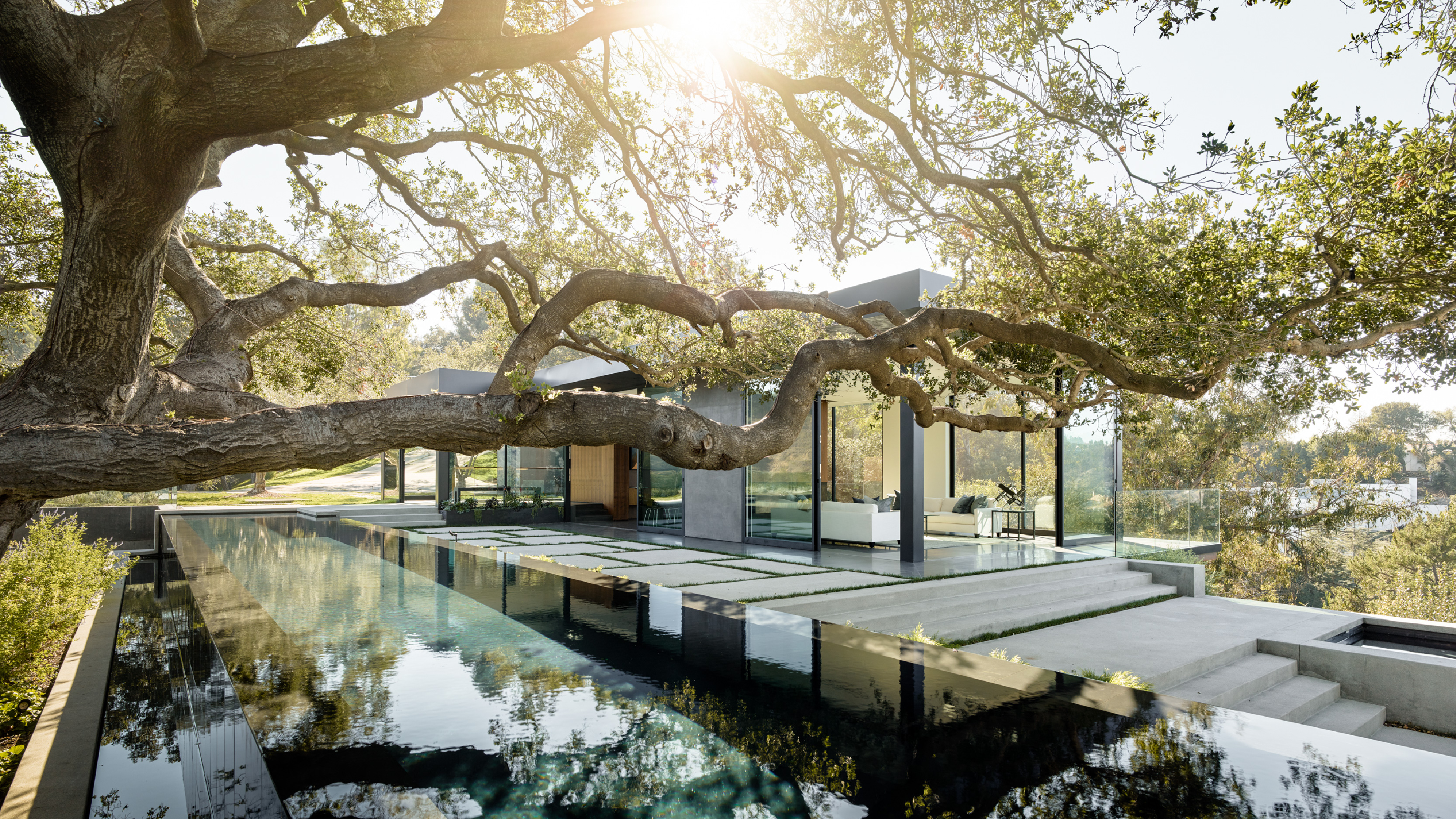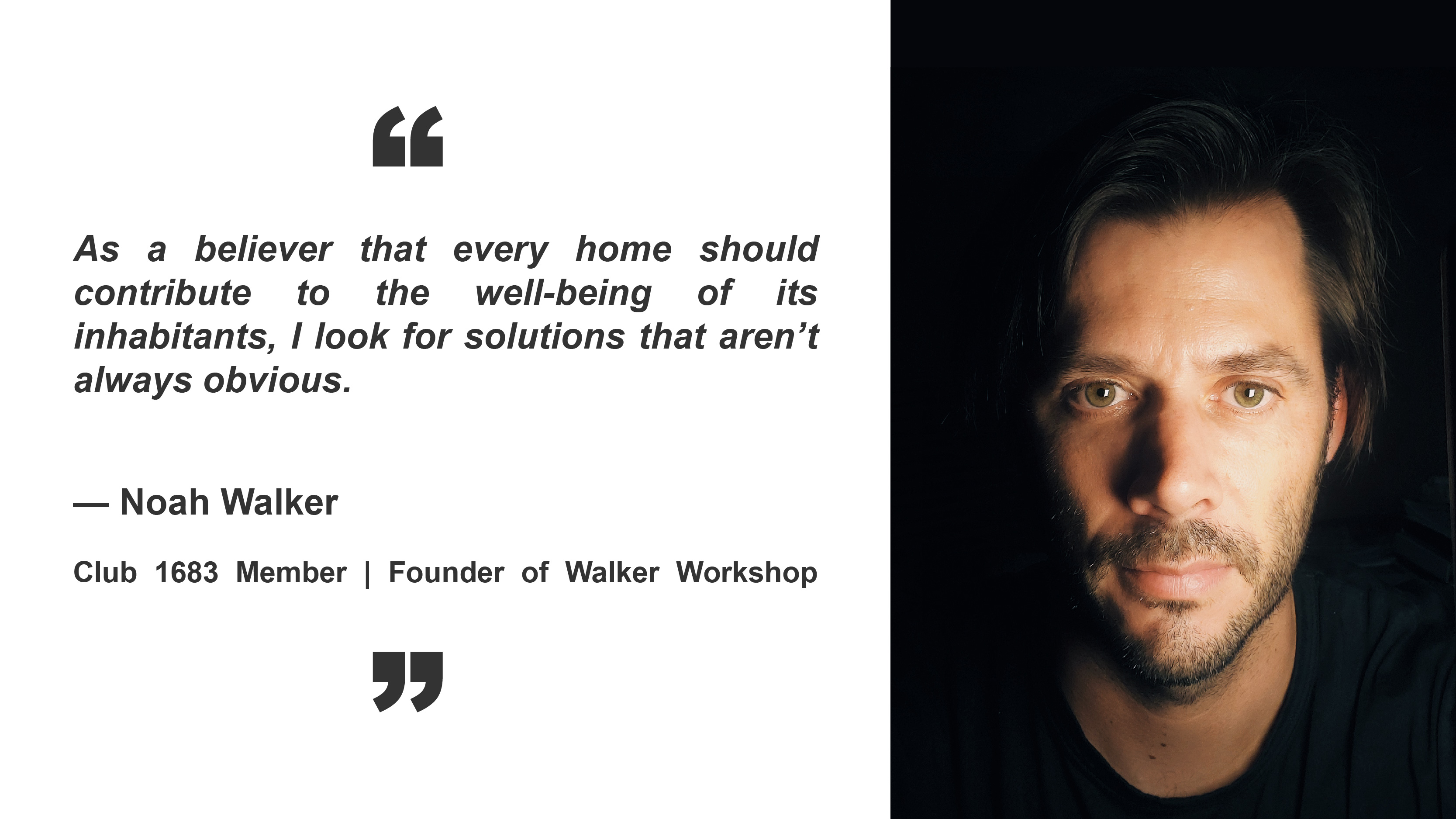Designing homes with an eye toward occupants’ health and well-being has drawn increasing interest over the past decade and has recently skyrocketed due to heightened demand for multi-use spaces at home — especially for high-end clients.
Luxury residential design is evolving to create even healthier environments, considering several factors like increased demand for natural light, the introduction of biophilia, the use of sustainable materials, and a deeper look into the impact of indoor air quality.
A healthy environment has become one of the primary considerations for consumers looking to design a new house or update an existing one, particularly in the luxury single and multifamily residential markets. For buyers in the luxury market, a healthy home is one that elicits a sense of reassurance arising from the prospect of improved health outcomes and longevity. According to a March 2020 study by Luxury Portfolio International, an increase in personal wealth (the number of individuals who report a net worth over $1 million in the U.S. grew 91% between 2010 and 2019) paired with an increased focus on health and well-being (and the amenities that can contribute to user health) will generate a $4.2 billion industry with the next generation of luxury homebuyers.
The recent impact of the global pandemic has left an indelible impact on how we live as a society and is driving conversations about how residential design will change in response to a heightened desire for residential environments that support a resident’s physical and mental health.
How will luxury single- and multifamily residential design evolve to create even healthier environments because of the pandemic? What existing trends — such as incorporating indoor/outdoor space and new technologies informing indoor air quality into luxury residences — will evolve to continue to contribute to healthy homes? And what new concerns will be brought to the table?
Putting a Premium on Indoor/Outdoor Space and Natural Light

Despite the benefits of biophilic design, high-end homeowners are even more interested in a tangible connection to nature and its impact on both their physical and mental well-being. Outdoor space has long been prized in residential design but has taken on new meaning in the pandemic era, in which activity has been restricted, and safe and healthy socializing has been limited to distanced gatherings in outdoor settings. This has led to an increased desire for indoor/outdoor space wherever possible — in urban, suburban, and rural contexts.
Integrating indoor and outdoor space in single-family homes “has been an evolution,” Takashi Yanai, Partner, EYRC Architects, says, noting that post-pandemic, there’s “a heightened enthusiasm for bringing what might typically be an indoor climatized program outside — like an outdoor dining room or kitchen.”
And what about daylight as a restorative element? Everyone responds positively to a house filled with natural light, but the desire to tactically integrate daylight more effectively has become particularly pronounced among ultra-high-income individuals — a segment that has shown both aggressive spending in health and self-interest during the recent pandemic, according to the March 2021 Ultra-High Net-Worth Insight report from Barton.
Now, high-end clients are not just concerned with having an influx of daylight but, rather, with how it fills the space, how it affects their circadian rhythms, and how it affects their use of a space throughout the day — even as a signal of passive, non-fueled heat. And that interest is becoming more of a priority when commissioning or renovating a home.
Designing for Infection Control and a Renewed Focus on Indoor Air Quality (IAQ)

Indoor air quality has long been a focus in residential design, as evidenced by the prevalence of low-VOC finishes, products, and furniture that have been proven to benefit residents’ respiratory health.
To preserve the health of the household in single-family houses, “everybody’s interested in getting fresh air,” Kevin Alter, principal of Alter Studio, says, noting that “the interest in clean air has manifested in more concern over what architectural finishes are made of and what they are off-gassing.” “People are recognizing that the air has things in it you can’t see that have the potential for dire consequences,” he says, be it a virus or potentially hazardous off-gassed fumes that could otherwise compromise respiratory health.
This renewed focus on IAQ may be born from concerns over COVID-19, but Alter hopes it will have a lasting effect that extends beyond the pandemic.
“I love that people are more aware of it,” he says. “It’s a problem when the only things that drive [decisions about what goes into a house] are aesthetics and costs. I would like to think that this interest has the positive effect of making clients think about other things they can’t see that also affect the environment.”
Gaggenau Club 1683 member Noah Walker speaks to the importance of how to integrate the indoors with the outdoors, bringing in lots of natural light but also designing for letting fresh air in, as well as maximizing systems and technologies that reduce indoor air quality issues.
“As a believer that every home should contribute to the well-being of its inhabitants, I look for solutions that aren’t always obvious. One is the concept of using downdraft ventilation in the kitchen. Newer systems like the Gaggenau Vario Downdraft Ventilation System offer a healthier living solution that also allows for open sight lines and a cleaner looking environment as well as quietly relieving the air of unwanted scents and smells.” Walker’s firm, Walker Workshop, believes that a space, thoughtfully executed, can elevate the body and mind of its inhabitants.

Gaggenau Vario 400 Series Downdraft Ventilation System – A Healthy Choice
The Gaggenau Vario 400 Series Downdraft Ventilation System features advanced noise reduction, optimized air management, and design flexibility to remove sensory distractions, so spaces are unencumbered by unwanted sound, smells and visual interruptions.
The modularity of the system allows for the perfect combination of ventilation and a customized cooktop assortment—Teppan Yaki, gas, wok, electric grill, and induction—and also offers design flexibility. The system may be installed against a wall or in an island and eliminates the need for a traditional hood.

This alternative to traditional hoods, assists in creating a space that is healthy for the mind, body and soul by connecting with all of the senses:
Sight – Unlike traditional hood solutions, the modularity of the integrated system works in perfect combination with Vario cooktops from the same series as gas, wok, induction, grill, or Teppan Yaki and allows for more design flexibility.
Sound – Exclusive to Gaggenau, an entirely bespoke engineered end-to-end ventilation system reduces noise due to holistically designed, special metal ducting accessories and an assortment of high-performing blowers to optimize the airflow and control the sound no matter the design or configuration.
Smell – An all-new automatic function – guided by an air quality sensor—detects odor and reacts automatically.
Touch – Designed for easy removal, a filtration saturation indicator will alert when it is time for cleaning with two ergonomic handles and a guided exit to help prevent oil from spilling from the integrated grease tank. The filters are dishwasher safe, and the appliance housing can be easily wiped down with a sponge.
Taste – This elegantly integrated system removes sensory distractions and focuses attention on uninterrupted views, beautiful design, comfortable conversation, and the aroma of prepared cuisine.
According to the Harvard T.H. Chan School of Public Health, “Particle levels while cooking with an unvented stove can reach 10x higher than our health-based limits for outdoor air pollution.” They also state “your home is your health. It’s that simple.” Adding components like more natural light, opportunities to bring in fresh air and keeping the indoor air quality clean will go far towards creating a home that will support mental and physical well-being.